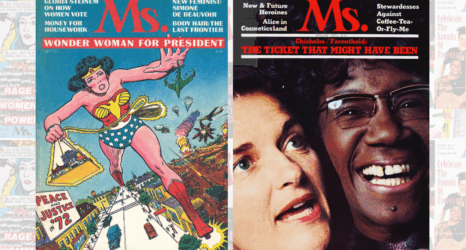The comic book industry usually appreciates women most when they are chopped into little bits and stuffed into freezers. Yet Marvel is making strides towards rewriting these traditionally misogynistic universes with their recent announcement that the new Thor will be a woman. Marvel editor Wil Moss explained,
The inscription on Thor’s hammer reads ‘Whosoever holds this hammer, if HE be worthy, shall possess the power of Thor.’ Well it’s time to update that inscription.
In the Marvel universe, the old Thor will no longer be considered “worthy” of the hammer and will be replaced by his more deserving counterpart, a woman. However, her gender will not diminish her character. As Jason Aaron, writer of the Thor series, said:
This is not She-Thor. This is not Lady Thor. This is not Thorita. This is Thor.
Moreover, she is a permanent, rather than a temporary, addition to the universe.
Unfortunately, while Marvel starts to equalize its fictional universes, other comic publishers still lag behind. One highly-anticipated and widely-acclaimed comic series released in May—Chicago Organized Workers’ League (C.O.W.L.)—seems determined to follow in its patriarchal predecessors’ footprints.
C.O.W.L. is the latest from Image Comics, publishers of The Walking Dead, and features the first actual labor union of superheroes. According to reviewers, C.O.W.L. is apparently fantastic, and might be the next big television show. Kurt Christenson from Entertainment Weekly wrote,
The characters feel real—not like pastiches of existing superheroes, but rather actual people who happen to have superpowers.
And Tony Guerrero for Comic Vine gushes that there is absolutely nothing wrong with the comic. In fact, he says, it’s like nothing you have read before.
Yet there is nothing “real” or unique about C.O.W.L.’s one-dimensional representation of women.
The first issue of the series—created by Kyle Higgins, Alec Siegel and Rod Reis— opens with the only woman superhero who has been introduced (Kathryn Mitchell, codename: Radia) strutting onto the page wearing a short, tight dress complimented by high-heeled boots. She seems nothing more than C.O.W.L.’s eye candy, and the ensuing pages only confirm this depiction. She can’t hold her own in a battle and immediately must be saved by her male coworkers. Her boss even signs her up for a photo shoot and interview with Bombshell Magazine.
Radia also perfectly fits into the stale stereotype of a woman sleeping her way to the top. Fellow superhero Tom Haydn (codename: Arclight) suggests her success is a result of her allegedly having a sexual relationship with the boss—a rumor that her boss apparently perpetuates and that her jealous door-slamming seems to confirm. No one questions the sexual harassment Kathryn faces, not even her.
It’s very clear that Kathryn was only designed to compliment and confirm the masculinity of the other characters, which is accomplished by not giving her a background story, powerful agency or a voice. Similarly, the only other women in the first issue exist simply to fawn over the accomplishments of the male superheroes.
At the same time, the male characters are drawn to be sympathetic and interesting—despite their disturbing flaws. At one point in the issue, Karl Samoski (codename: Eclipse) punishes an adolescent peeping tom by whipping out his penis and peeing on the young boy. Of course nobody stops and says, “Hey Karl, that’s child abuse.” One character, John Pierce, unhelpfully quips, “Good to see the community outreach program is going well.” It’s absurd that the two issues devote more time to developing an abuser than to developing a woman character.
In the second issue, released June 25, Kathryn doesn’t even make it onto the page. The only women who make appearances are a stripper, whose sole function is to pleasure a male protagonist, and a superhero’s significant other, Sarah, who provides advice and support to her husband.
The creation of another world overwhelmingly populated by white men is a testament to the creators’ narrow visions and lack of creativity. They seem incapable of producing anything but overdone stereotypes, so that C.O.W.L. becomes a copy machine for patriarchal society.
Currently, women are fighting for fair treatment and representation in the actual job market. It’s disheartening to see that even when given ample creative possibility, comic creators cannot conceive of a union that includes women with diverse backgrounds, interests and motivations. Or at least a union where women, people of color, the LGBTQ community and other marginalized groups question patriarchy rather than sitting on its lap and feeding it cocktails.
At one point, a character asks C.O.W.L. chief Geoffrey Warner, “Why are you re-writing [C.O.W.L.’s] history?” A better question for comic book writers would be, why aren’t you?
Photo of cover of C.O.W.L., Issue 1, courtesy of Image Comics.





